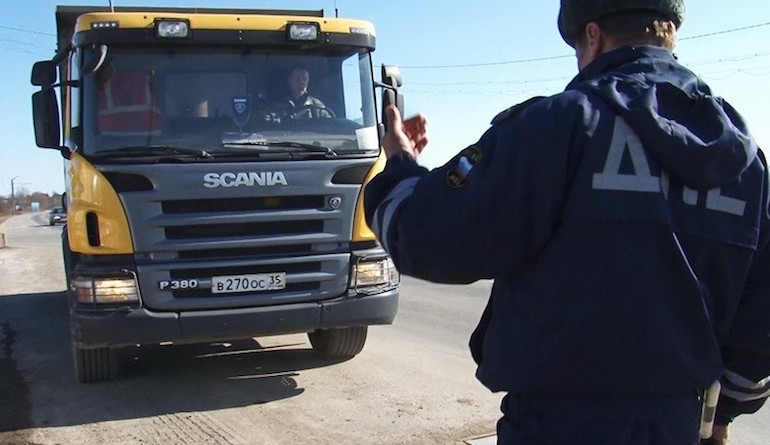
Fine for overloading a truck 2016
Freight transport is a very popular and rapidly growing business. Entrepreneurs often neglect the rules of the road and the technical characteristics of their vehicles, trying to load a semi-trailer or dump truck to capacity. What overload leads to is clear and without words: the speedy wear of the vehicle and the destruction of roads.
Overloading is a very serious problem leading to:
- increased load on the seat lock;
- increased consumption of fuel and technical fluids;
- wear of the clutch, gearbox, brake pads, suspension;
- rubber quickly becomes unusable;
- the road surface is being destroyed, on which the state spends billions of budgetary funds.
To prevent all this, serious penalties are provided for in the Code of Administrative Violations. In particular, fines for violation of the rules for the carriage of goods are considered in Article 12.21 of the Code of Administrative Offenses, which consists of several paragraphs. Let's consider them in more detail.

Penalties for exceeding the maximum allowable axle load
As you know, the mass of the car is transferred to the roadway by the wheels of each of the axles. There are maximum permissible load limits for cars of different classes.
According to one of the classifications, trucks are divided into:
- group A cars (they are allowed to be used only on the tracks of the first, second and third categories);
- cars of group B (their operation is allowed on roads of any category).
Roads of the first or third category are ordinary non-high-speed roads with up to 4 lanes in one direction. All other road categories include motorways and expressways.
Permissible axle load for cars of group A ranges from 10 to 6 tons (depending on the distance between the axles). For auto group B, the load can be from 6 to four and a half tons. If this value is exceeded by more than five percent (CAO 12.21.1 part 3), then the fines will be:
- one and a half to two thousand rubles per driver;
- 10-15 thousand - an official who allowed an overloaded car to leave the route;
- 250-400 - for the legal entity on which the vehicle is registered.
Such high fines are due to the fact that when driving on high-speed roads, overloaded vehicles pose a danger not only to the surface, but also to other road users, because due to the inertia of the load during emergency braking, such a truck becomes practically uncontrollable, and its braking distance increases many times over.
It is clear that an ordinary traffic police inspector will not be able to tell by the appearance of a truck whether it is overloaded or not (although if you look at the springs, you can see how they sagged under the weight of the load). Specially for this purpose, points of control weighing are installed on the roads. If, as a result of weighing, the scales showed an overload, the driver will be told to drive off to a special parking lot to draw up a protocol on the violation.

Weighing is also necessary in order to check whether the shipper has submitted reliable data on how much the cargo weighs. If the data specified in the bill of lading is not true, the following penalties will be imposed:
- 5 thousand - driver;
- 10-15 thousand - an official;
- 250-400 thousand - a legal entity.
To transport oversized, dangerous or heavy cargo, you must obtain a permit from Avtodor.
They will agree on the weight, dimensions, contents, as well as the transportation route. If one of the specified parameters does not match or there is a deviation from the route, then both the driver and the consignor will face penalties.
Failure to comply with traffic signs
If you see sign 3.12 - Axle load limit, then you need to understand that driving on this route is prohibited if the actual load on at least one axle exceeds that indicated on the sign. If you have a road train or semi-trailer with twin or triple axles, then the load on each of the wheel rows is taken into account.
As a rule, the greatest load falls on the rear axles, since the front axles are connected to the cab and the power unit. That is why drivers try to place the load on the trailer more or less evenly. If the load is not uniform, then the heaviest items are placed just above the axles.
The fine for violating the provisions of sign 3.12 is two to two and a half thousand. The driver will have to pay this money if he does not have permission to travel on this route.
It is also worth noting that for overloading a truck can be placed in a special parking lot until the causes are eliminated. That is, you will have to send another car to take part of the cargo.
Loading…